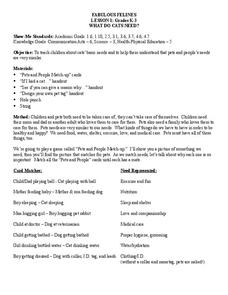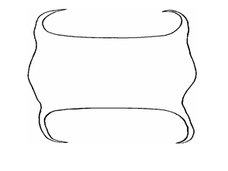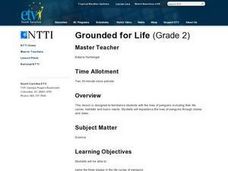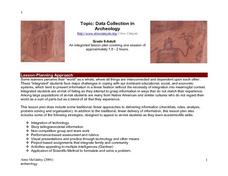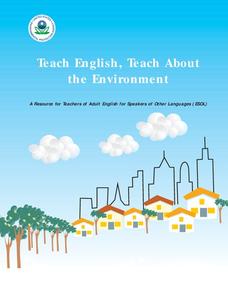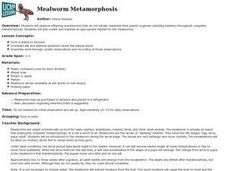KOG Ranger Program
Match and Lighter Safety
Go over the basics of fire prevention with a lesson plan focused on safety with matches and lighters. With a series of dilemma cards that describe potential fire risks, learners choose the most responsible way to handle matches and...
Baylor College
What's That Food?
Get things cooking with the first instructional activity in this series on the science of food. Working in small groups, young scientists make and record observations about different mystery foods. These descriptions are then shared with...
Curated OER
Fabulous Felines
Students explore basic needs through discovering that pets and people need very similar things. They will play matching games, sing songs, read books, and discuss the needs of people and animals.
BioEd Online
Skeletal Structures
What better way to study the structures of organisms than by creating a new being? After considering different types of skeletal supports (exoskeleton and endoskeleton), budding biogeneticists work together to create their own animals -...
Curated OER
Blue Crabs - The Blue Crab's Chesapeake Journey
A plethora of information about the blue crabs of Chesapeake Bay will amaze and delight your marine biologists. They learn, through direct instruction, about the characteristics and life cycle of this fascinating arthropod. A highlight...
Curated OER
Fishing
Students explore the techniques and basic needs of the fisherman. In this fishing lesson, students view a demonstration of the use of fishing equipment. Students research Iowa farm ponds and design a class mural from their...
Arts & Humanities
Make Your Own Flower Garden
Get into art with a little lesson on flower parts. The class reviews basic information regarding flowers and then they use a paper mosaic technique to create visual representations of the lovely plants.
Curated OER
Community Video and Brochure about Horse Therapy
Students research basic information about horses, horse care and horse therapy effects on humans. They identify what horses need to be healthy and research needed supplies and funds. Students work in groups to prepare an educational...
Curated OER
Who Are We? An Introduction to the Life Within Our Bodies
Students examine cell structure, cell division, and the basic structure of DNA. They read and discuss a case study of DNA research, answer discussion questions, role-play the process of mitosis, and complete a DNA Fact or Fiction worksheet.
Curated OER
Stem Cell Bioethics
Students study the steps of embryonic development. They distinguish between the advantages/disadvantages of embryonic stem cells vs. adult stem cells and discuss the ethical implications of stem cell research.
Curated OER
Children's Health
Pupils learn the basic parts of an insect, where they like to hide indoors, and how to safely get rid of them. They assemble the cockroach body and cut it out of a brown bag. They attach pipe cleaners as legs and attennae. They then...
Baylor College
Your Energy Needs (BMR)
How many Calories one needs on a daily basis is dependent on a number of factors including gender, height, and activity level. In the third of seven lessons about energy and food, young nutritionists calculate the number of Calories...
Curated OER
Frog Metamorphosis
Students play 20 Questions with animal characteristics and then view an animation of how a tadpole changes into a frog. They consider the importance of camouflage to frogs and write out the story of a frog from tadpole to adult.
Curated OER
Peas In A Pod: Mendelian Genetics
Students complete a series of lessons where they learn about the basics of genetics, fill out Punnett Squares correctly, and solve reality based problems. In this genetics lesson plan, students have worksheets that are provided.
Curated OER
Skates
Students gain understanding of structure, characteristics, and basic needs of living things and their role in world, identify parts of skate, observe details of skate's body and skate egg case, and identify unique characteristics of skates.
Curated OER
Grounded for Life
Second graders become familiar with the lives of penguins including their life cycles, habitats and basic needs. Students will experience the lives of penguins through stories and video.
Curated OER
A Rainbow Under the Sea: How Do Animals Survive in the Ocean?
Second graders, with adult help, create a PowerPoint presentation on a selected ocean animal.
Curated OER
Ecuadorian Rainforest
Have your class talk about the importance of the rainforest and the products that come from it. Learners watch a video showing the path of chocolate from the rainforest to the supermarket. They discuss how the rainforest and...
Curated OER
Data Collection in Archeology
High schoolers become familiar with the fascinating world of Rock Art. They focus on images from SE Utah, this is where the pictures were taken. Students are encouraged to use Power Point and Access file as a guide, they explore the...
Curated OER
Layer Cake Archaeology
Excavating cake? Why not! Kids spoon into some layers and artifacts during this tasty hands-on activity. The cake, a simulated archaeological dig, is the object of observation and discussion.
US Environmental Protection Agency
Teach English, Teach About the Environment
Spread the message of recycling while teaching your English language learners new vocabulary and practicing verb tenses. Included here are four lesson plans for each level (beginning, intermediate, and advanced) as well as accompanying...
NOAA
The Great, Glowing Orb What You Will Do: Make a Solar Heat Engine
How is solar energy able to move wind and water to control the climate? Scholars explore the concept of solar energy in the first of 10 activities in the Discover Your Changing World series. They follow instructions to build homemade...
Curated OER
Mealworm Metamorphosis
Students observe offspring (mealworms) that do not initially resemble their parent organism (darkling beetles) throughout complete metamorphosis. They also create and maintain an appropriate habitat for the mealworms.
Curated OER
Under Pressure
Students view a video clip on dams. They discuss how the dam is reinforced and how it holds the pressure of water. They participate in an activity in which they use liter bottles to represent the dam.


